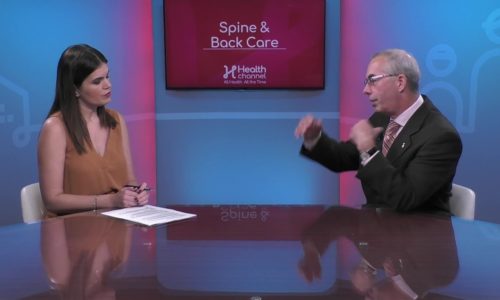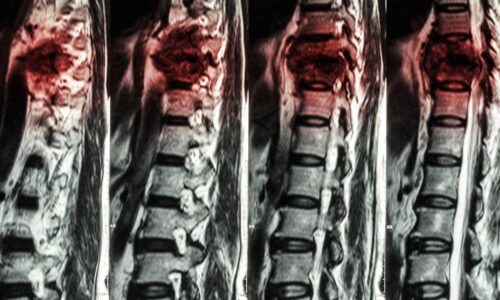Osteoporosis and Compression Fractures |
About 700,000 cases of spinal compression fractures occur every year due to osteoporosis. Jose Mena, Interventional Spine Specialist at Miami Orthopedics and Sports Medicine Institute, says sometimes people in their 80 years old all of the sudden develop back pain.
He also explains x-rays are the best way to know if you have a fracture and sometimes during an x-ray the doctor captures a fracture and the patient does not have any pain.
Transcript
I was looking at this statistic here that I wanted to share with our viewers about 700,000 cases of spinal compression fractures occur every year due to osteoporosis and I believe we have another here we go another graphic that kind of gives some points here back pain that starts slowly and gets worse with walking but has not felt when resting loss of height as much as six inches over time goodness gracious and stooped over posture or kyphosis also called and what’s that word there. Dawager’s hump. thank you for clarifying that so this is pretty difficult. One of the things is that sometimes the first point there that starts slowly sometimes it can happen like very cutely so you’re all of a sudden you develop back pain and you’re from sitting down or not doing any particular strenuous activity so all the sudden you develop back problem and normally we have to have a very low level suspicion so normally the patient has a it’s 80 years old and suddenly they have back pain immediately that’s one of the things that we need to go ahead and start treating and and they should from the physician in getting at least an x-ray to look if they there’s a fracture or so. Correct so generally x-rays are diagnostic for these but in patients who do have a suspicious fracture well oftentimes order an MRI so that would be more to rule out any underlying tumor or for example hematoma or bleeding around the spinal cord that could cause difficulties or pains down the legs and things like this. And I want to add a little more so as well if you have multiple fractures you don’t know which fracture might be the one that is right it’s causing your problem because normally we can see people that they have we’re x-ray and the patient and all of a sudden we capture a fracture and they don’t have any pain some things we go ahead and order an MRI and we can see that the fractures are old and suddenly there’s a new fracture so we know which one to target accurately where the money is so we can go and start treating that accordingly.








